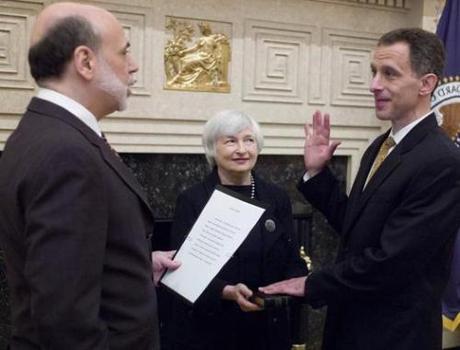In March 2013, something quite extraordinary happened in the Mediterranean island country of Cyprus. In return for a loan from the Eurozone to bail out the heavily-indebted country and its banking system, as much as 80% of “large” (over €100,000) bank deposits in the country’s largest bank, Cyprus Popular Bank, would be confiscated.
At the time, I warned about contagion effects from Cyprus. Sure enough, talk of a wealth tax on bank deposits immediately began in New Zealand and Spain, followed by the Eurozone chair saying the personal bank accounts of other countries can also be raided.
Now, it looks like the Cyprus contagion has reached the United States.
Before you read further, please familiarize yourself with the following:
- The initials TBTF stand for “too big to fail”.
- The initials SIFI refer to systemically important financial institution – a bank, insurance company, or other financial institution whose failure might trigger a financial crisis. In other words SIFI is a TBTF.
- The initials FDIC stand for the Federal Deposit Insurance Corporation, a United States government corporation operating as an independent agency created by the Banking Act of 1933. As of January 2013, FDIC provides deposit insurance guaranteeing the safety of a depositor’s accounts in member banks up to $250,000 for each deposit ownership category in each insured bank. As of September 30, 2012, the FDIC insured deposits at 7,181 institutions. The FDIC also examines and supervises certain financial institutions for safety and soundness, performs certain consumer-protection functions, and manages banks in receiverships (failed banks). The FDIC receives no Congressional appropriations – it is funded by premiums that banks and thrift institutions pay for deposit insurance coverage and from earnings on investments in U.S. Treasury securities. The FDIC does not provide deposit insurance for credit unions, which are insured by the National Credit Union Administration (NCUA).

On April 17, 2013, at a conference sponsored by the International Monetary Fund in Washington, D.C., Harvard University economics professor Jeremy C. Stein, a member of the presidentially-appointed Federal Reserve Board of Governors, said something that should send chills down the spine of anyone who has money in U.S. banks and other financial institutions, and who is counting on the FDIC or the federal government to insure their money.
In his speech on “Regulating Large Financial Institutions,” Stein said:
“Where do we stand with respect to fixing the problem of ‘too big to fail’ (TBTF)? Are we making satisfactory progress, or it is time to think about further measures?
I should note at the outset that solving the TBTF problem has two distinct aspects. First, and most obviously, one goal is to get to the point where all market participants understand with certainty that if a large SIFI were to fail, the losses would fall on its shareholders and creditors, and taxpayers would have no exposure. However, this is only a necessary condition for success, but not a sufficient one. A second aim is that the failure of a SIFI must not impose significant spillovers on the rest of the financial system, in the form of contagion effects, fire sales, widespread credit crunches, and the like. Clearly, these two goals are closely related. If policy does a better job of mitigating spillovers, it becomes more credible to claim that a SIFI will be allowed to fail without government bailout.
[...] if [...] a SIFI does fail, the orderly liquidation authority (OLA) in Title II of the Dodd-Frank Wall Street Reform and Consumer Protection Act now offers a mechanism for recapitalizing and restructuring the institution by imposing losses on shareholders and creditors. In the interests of brevity, I won’t go into a lot of detail about OLA. But my Board colleague Jay Powell talked in depth about this topic in a speech last month, and I would just register my broad agreement with his conclusion–namely that the Federal Deposit Insurance Corporation’s (FDIC’s) so-called “single point of entry” approach to resolution is a promising one.2
2 Powell, Jerome H. (2013). “Ending ‘Too Big to Fail’,” speech delivered at the Institute of International Bankers 2013 Washington Conference, Washington, D.C., March 4
Perhaps more to the point for TBTF, if a SIFI does fail I have little doubt that private investors will in fact bear the losses–even if this leads to an outcome that is messier and more costly to society than we would ideally like. Dodd-Frank is very clear in saying that the Federal Reserve and other regulators cannot use their emergency authorities to bail out an individual failing institution. [...]“
Read the rest of Stein’s speech here.
Tyler Durden of ZeroHedge brings home the reality of Stein’s words with this graphic below:

~Eowyn

